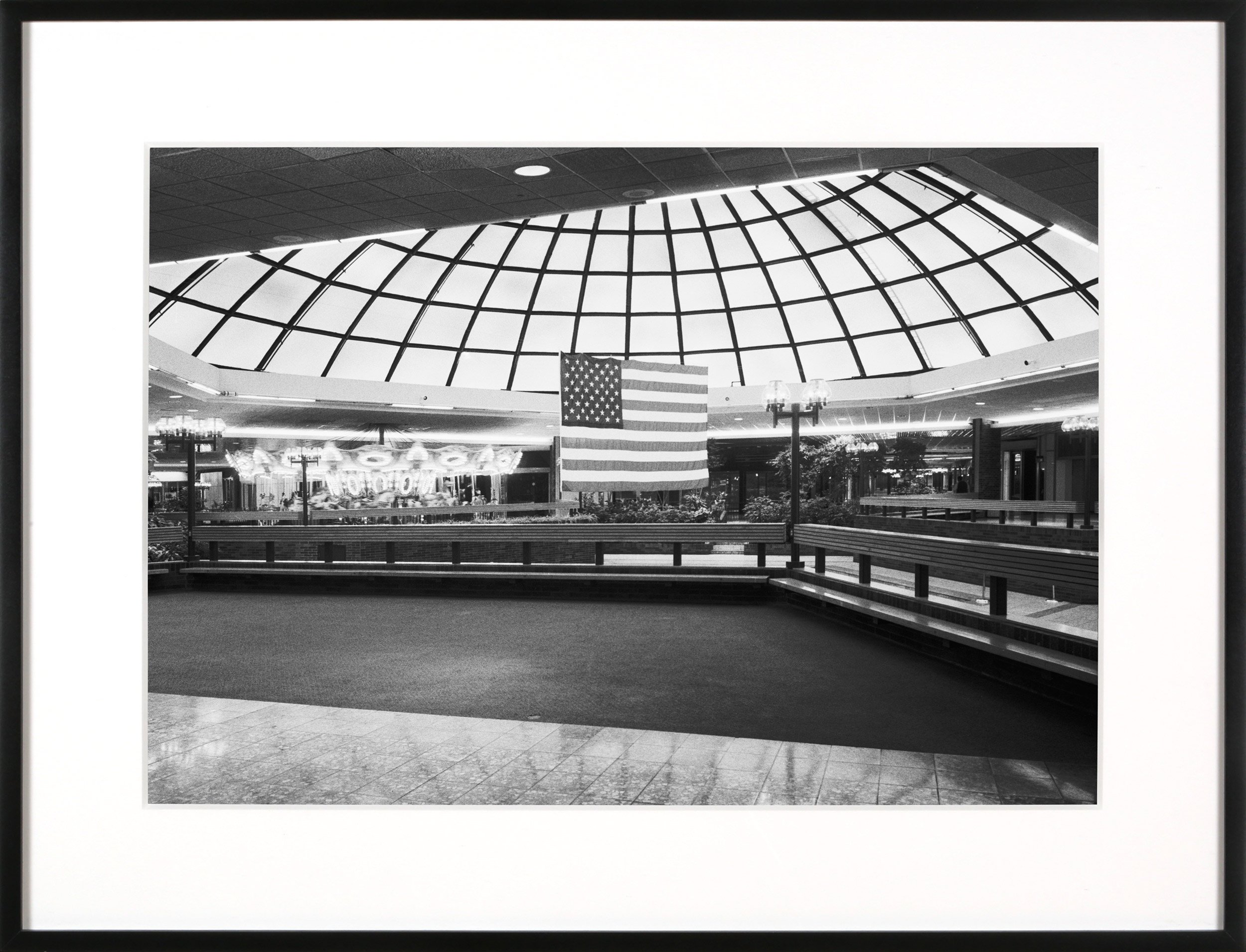
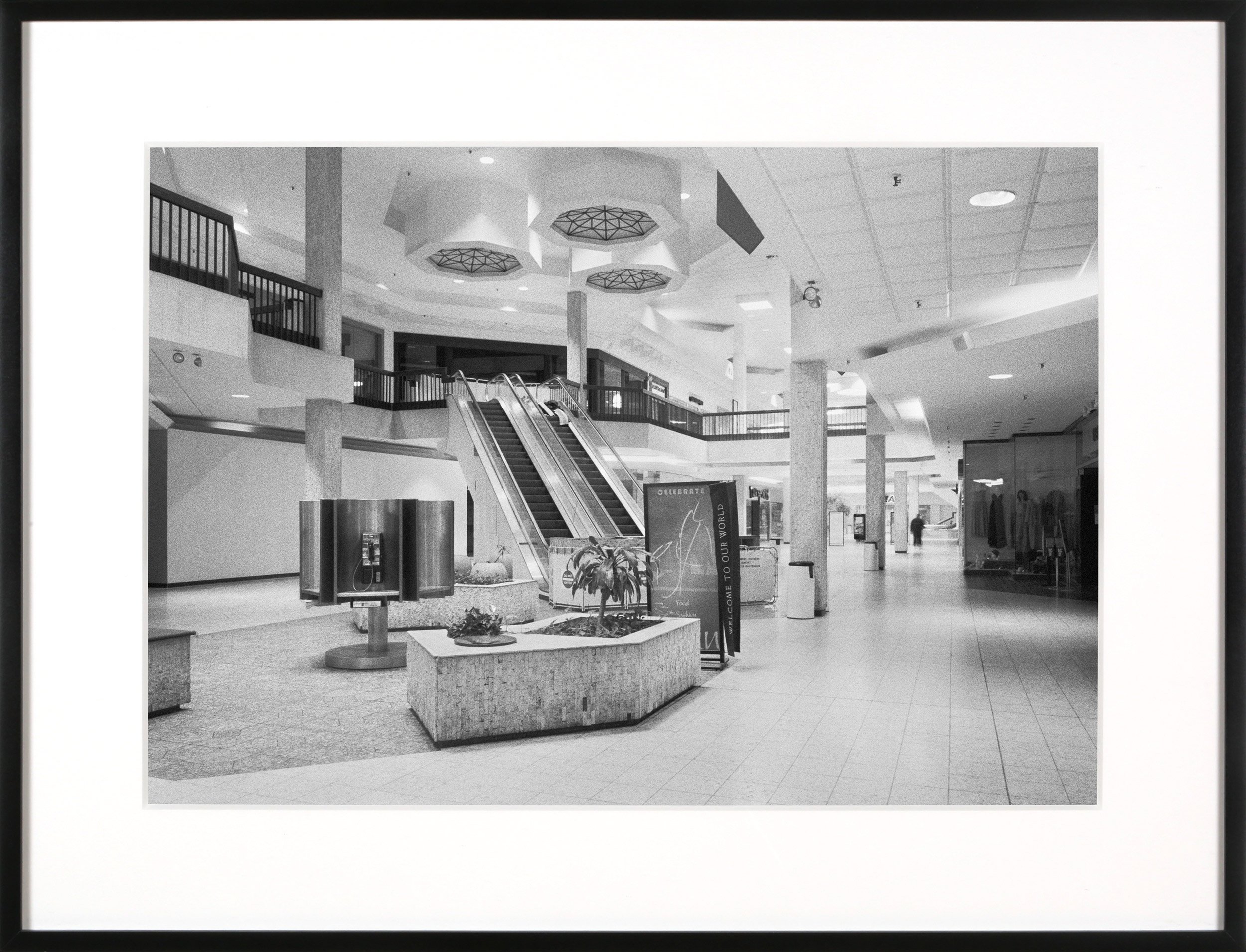
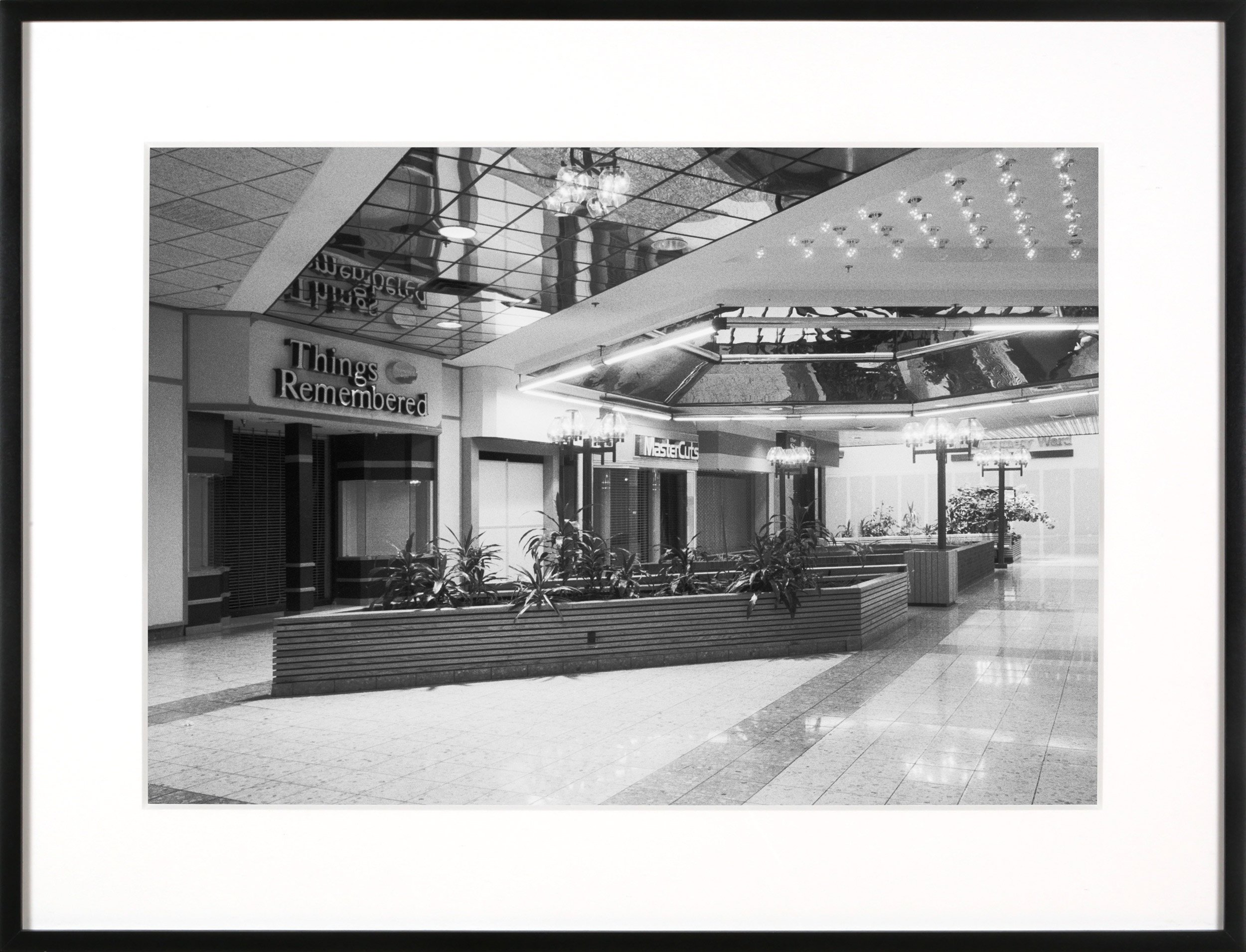
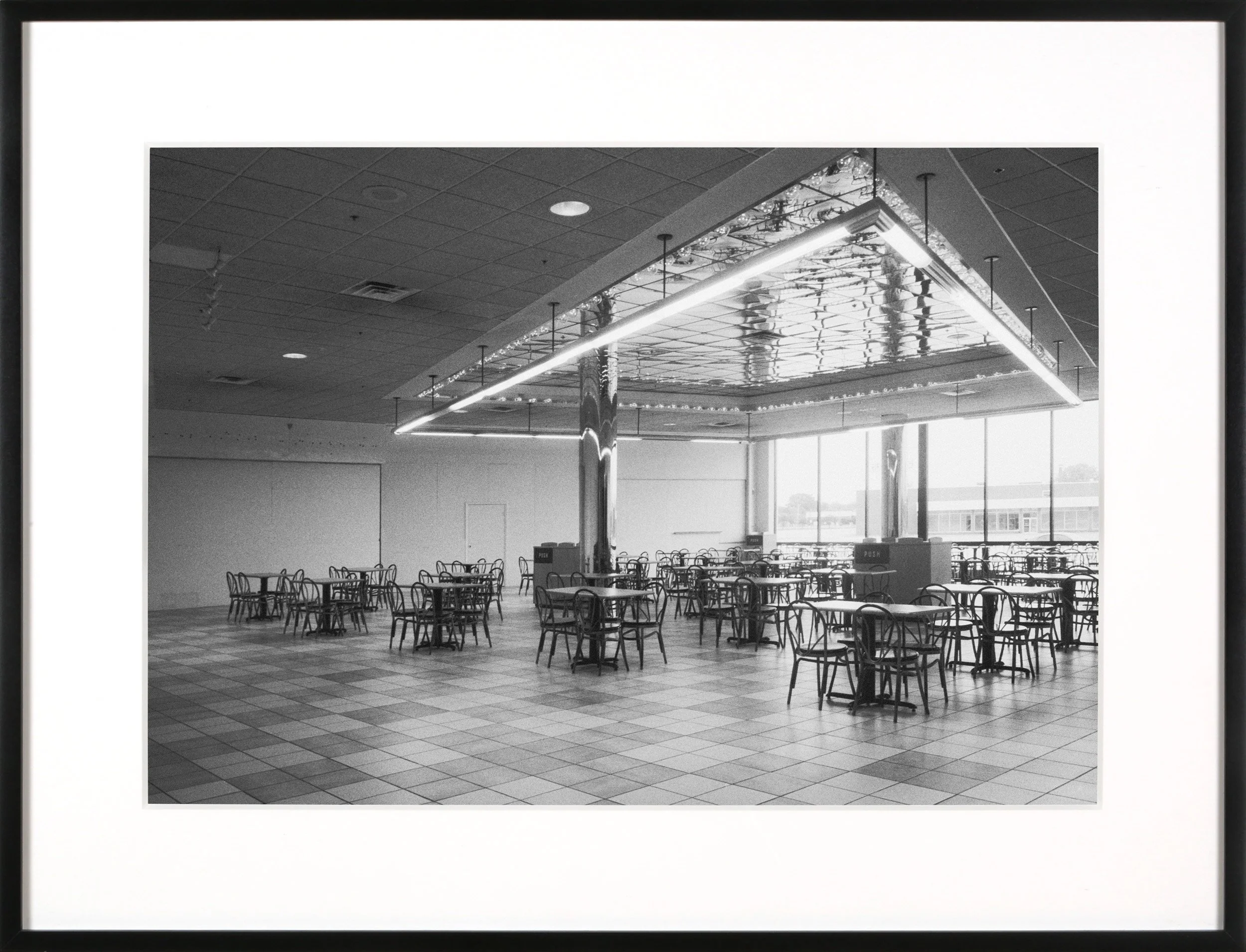
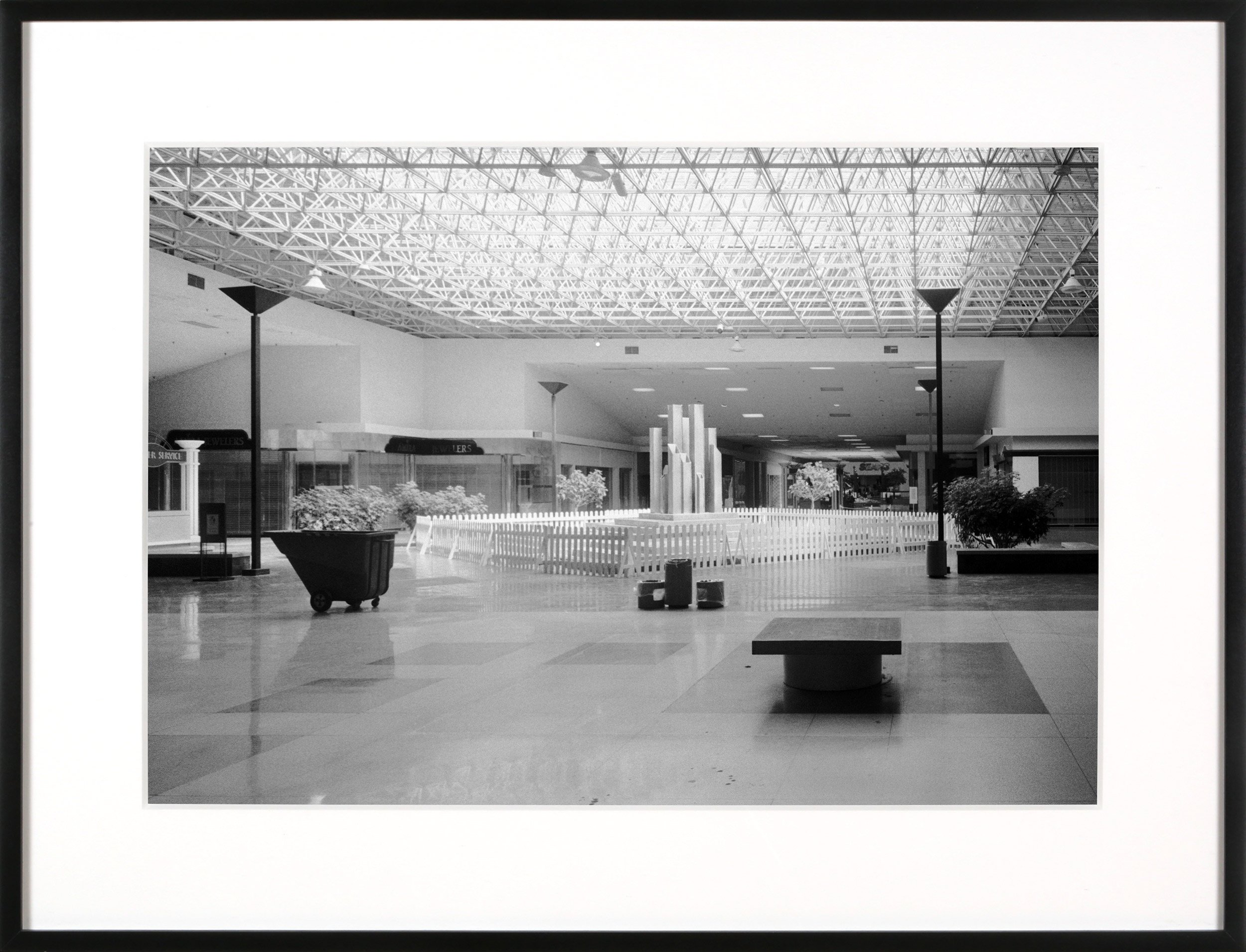
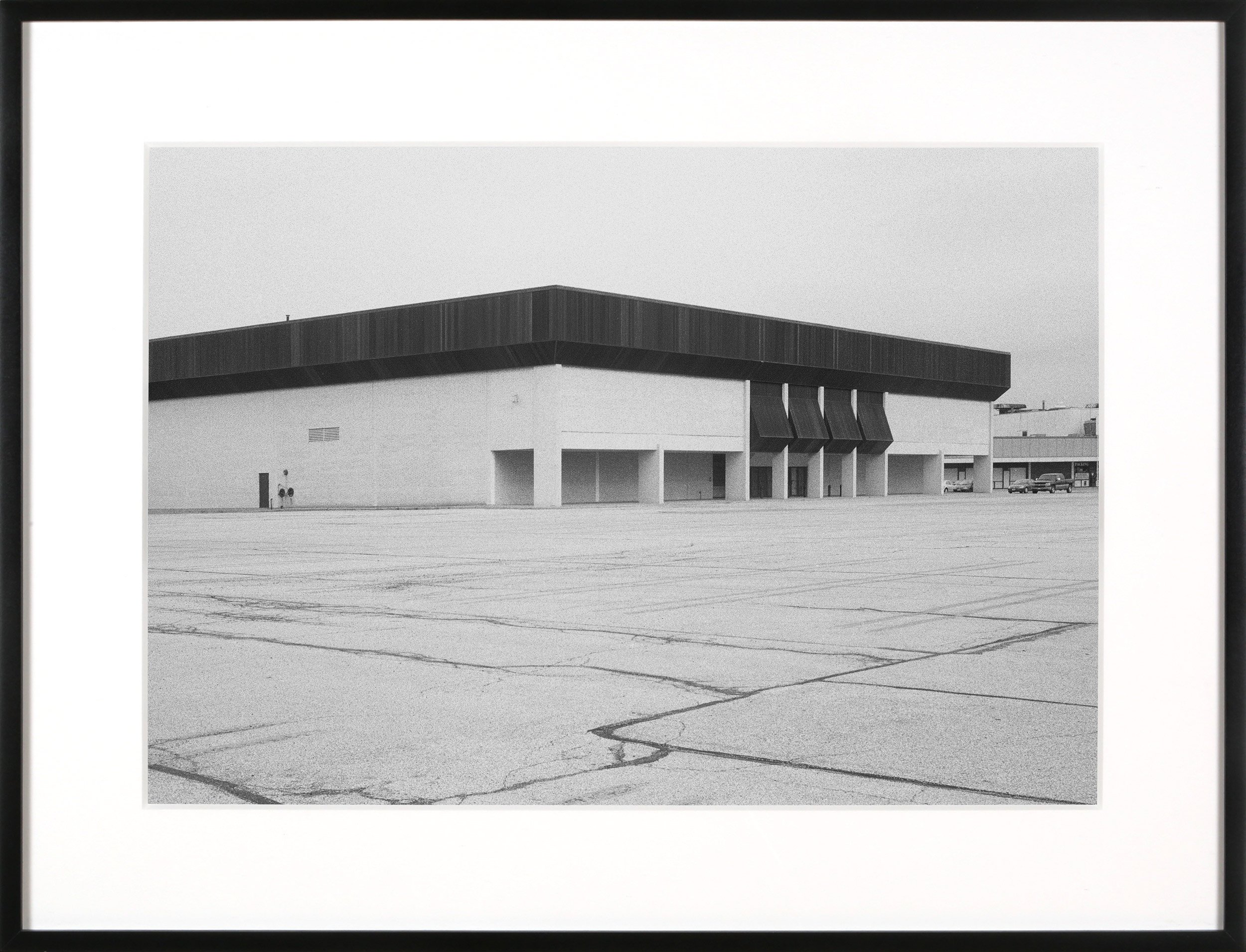
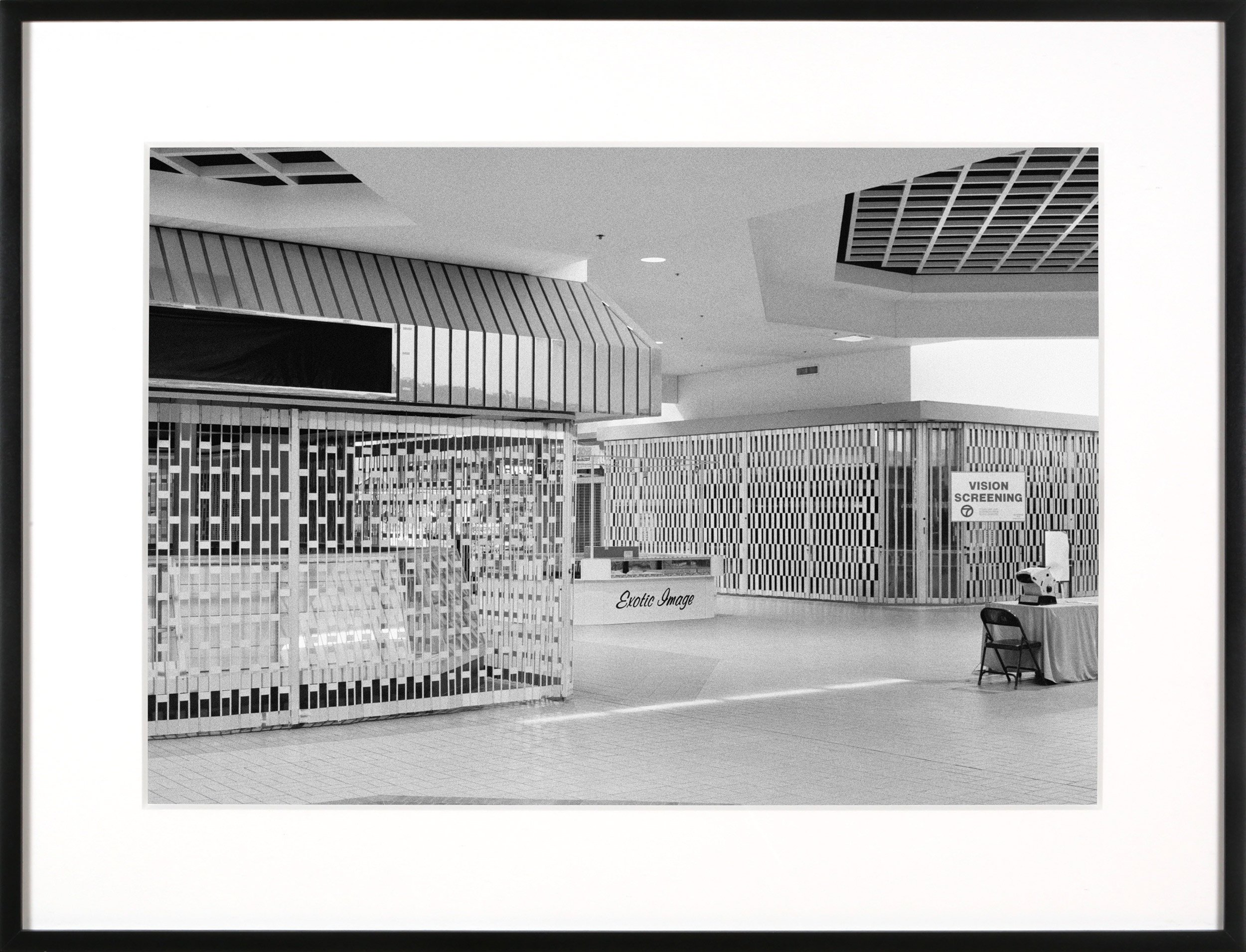
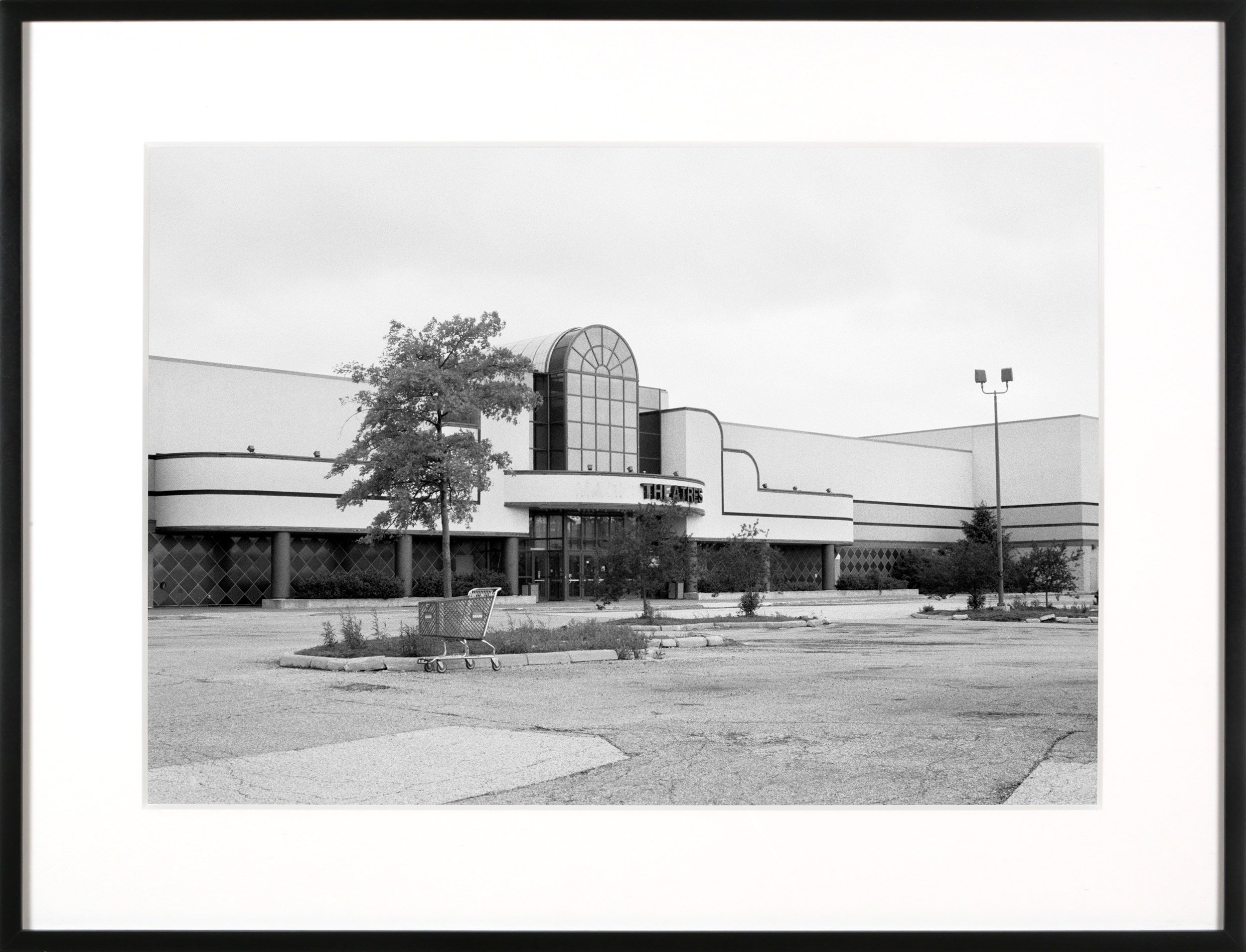
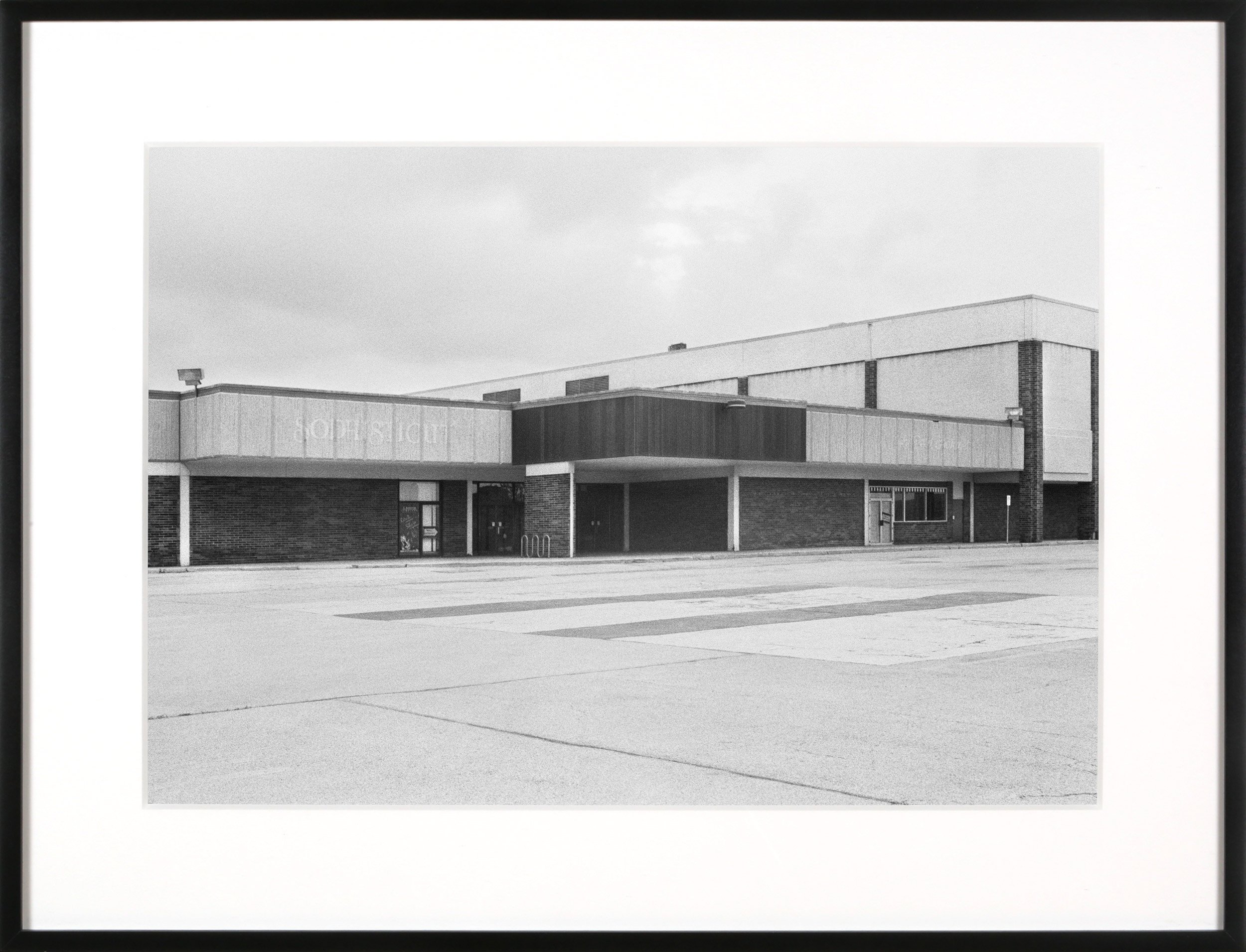
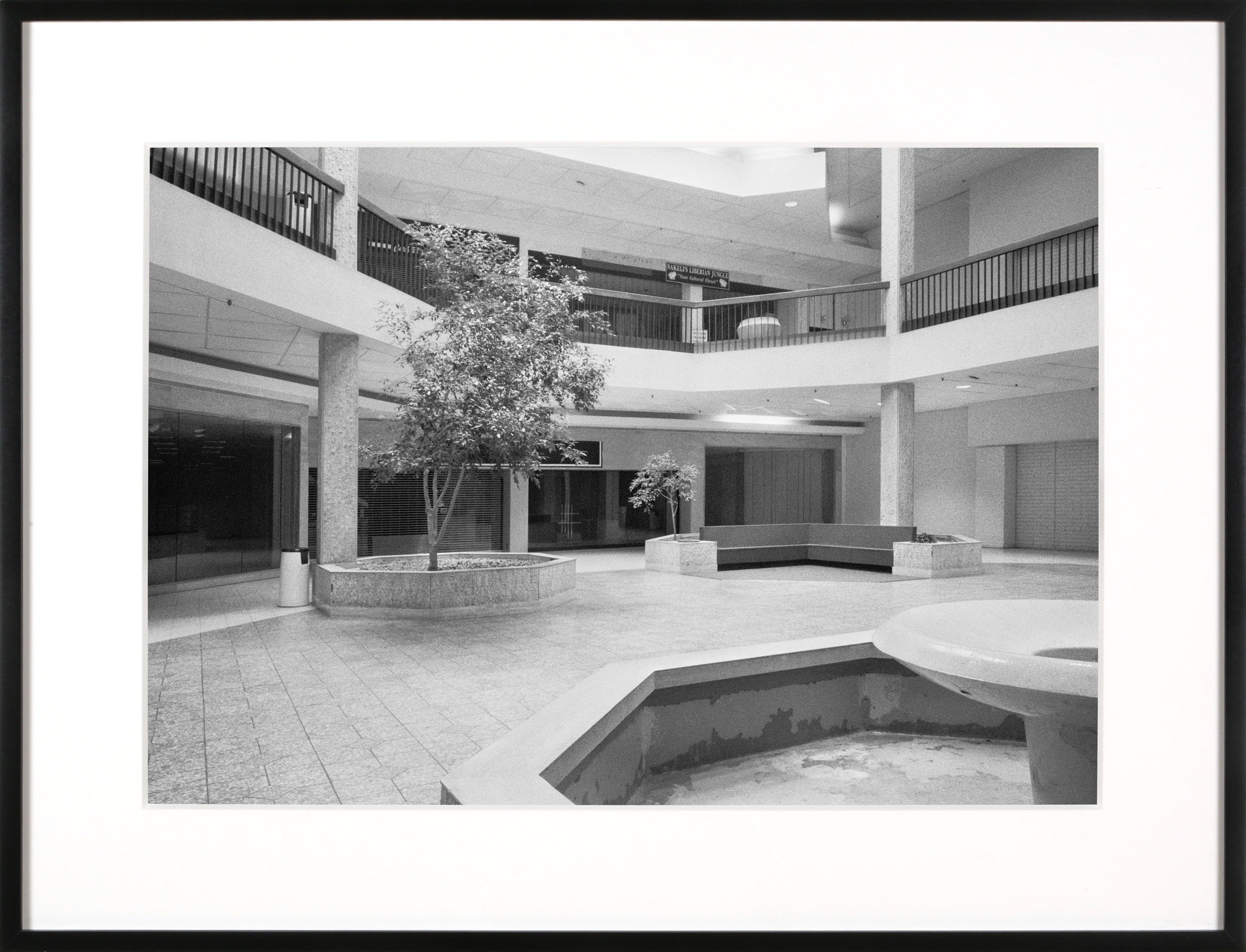
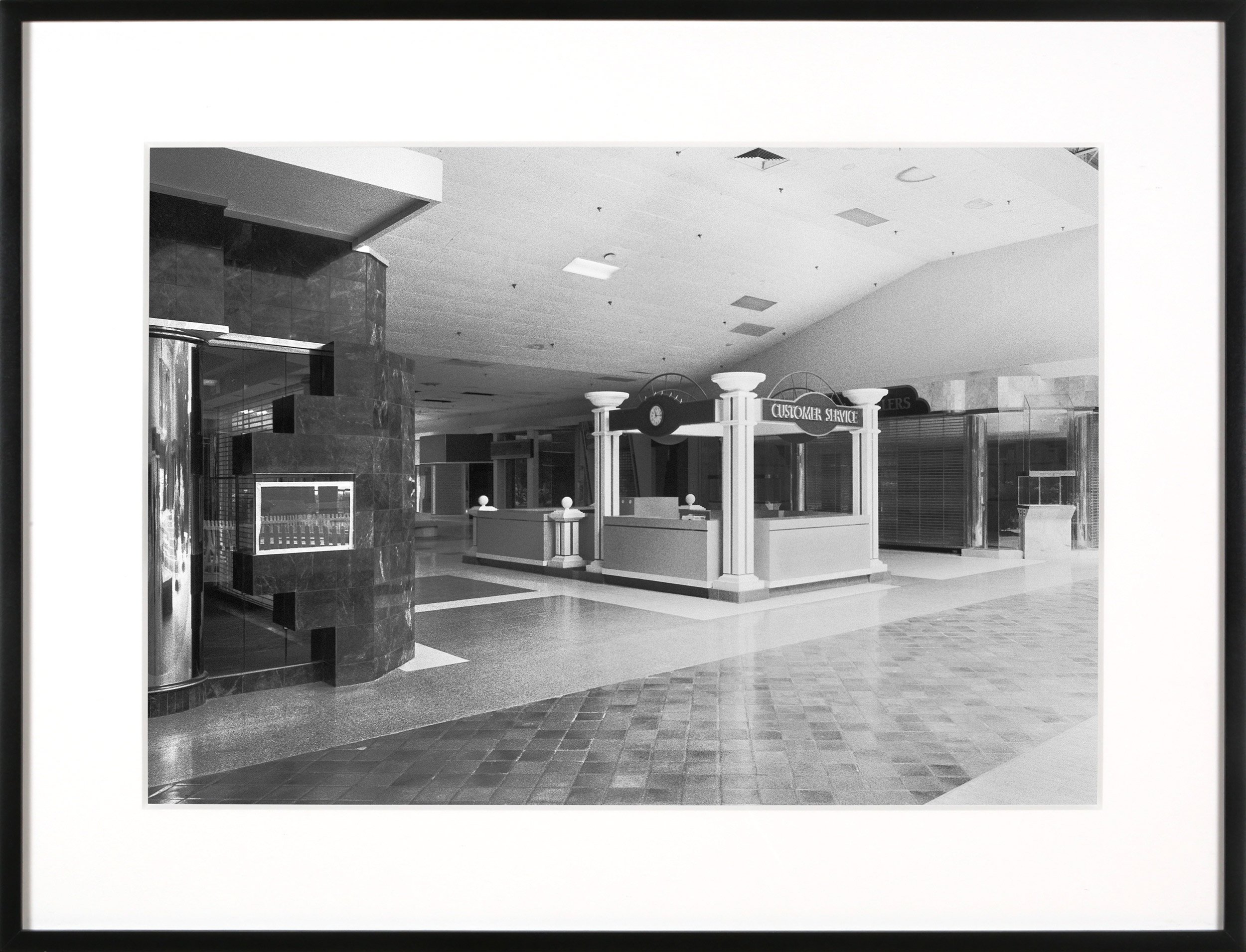
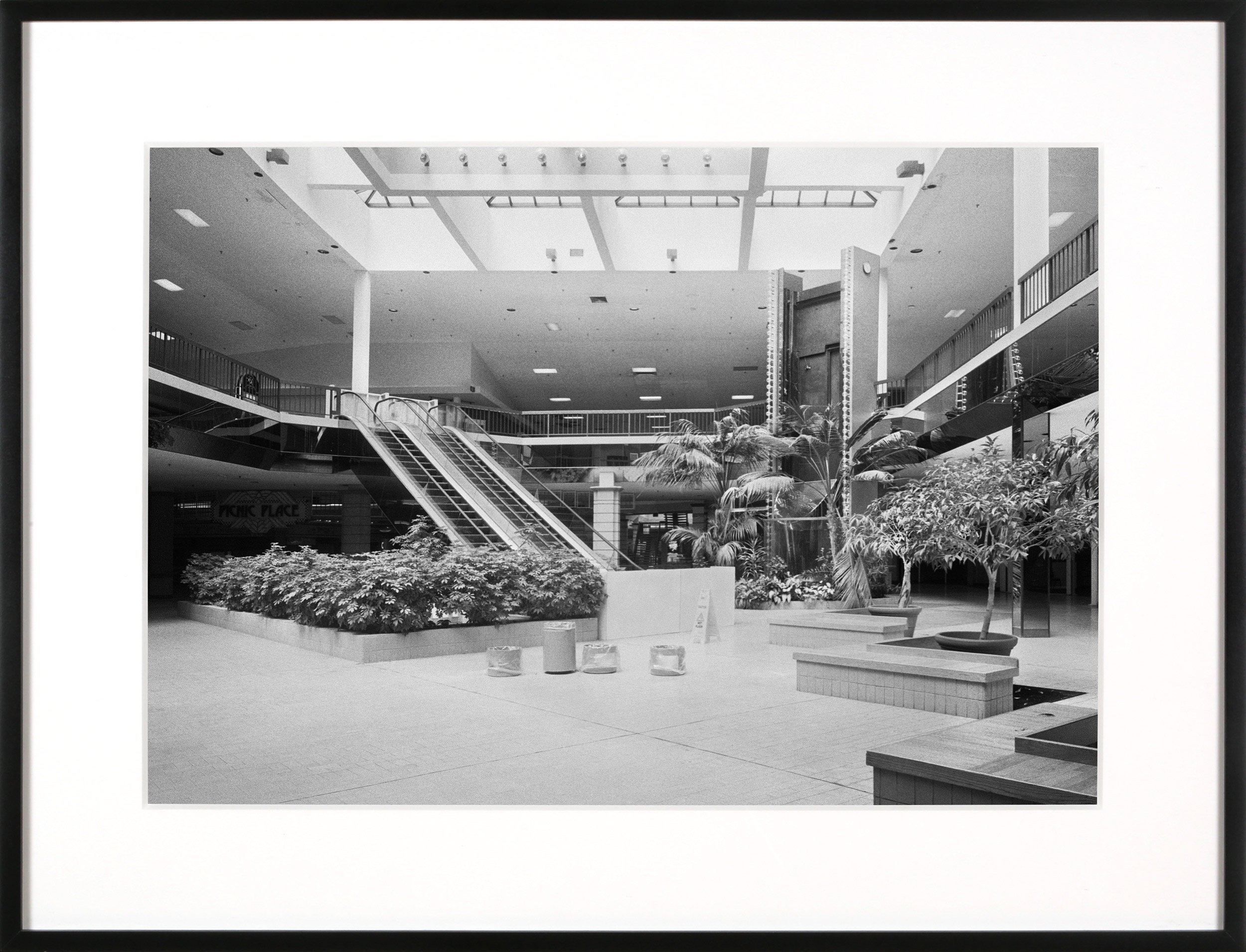

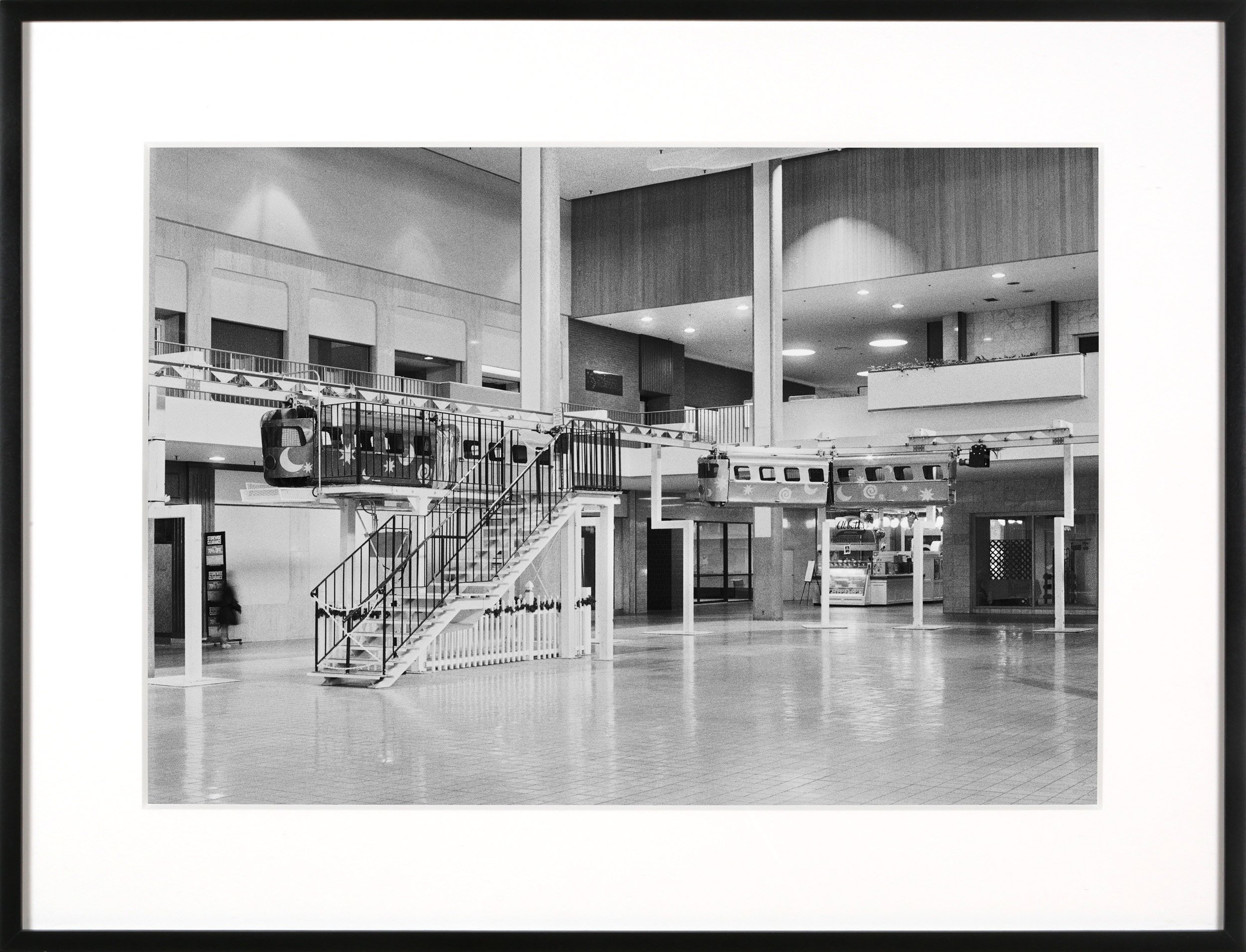
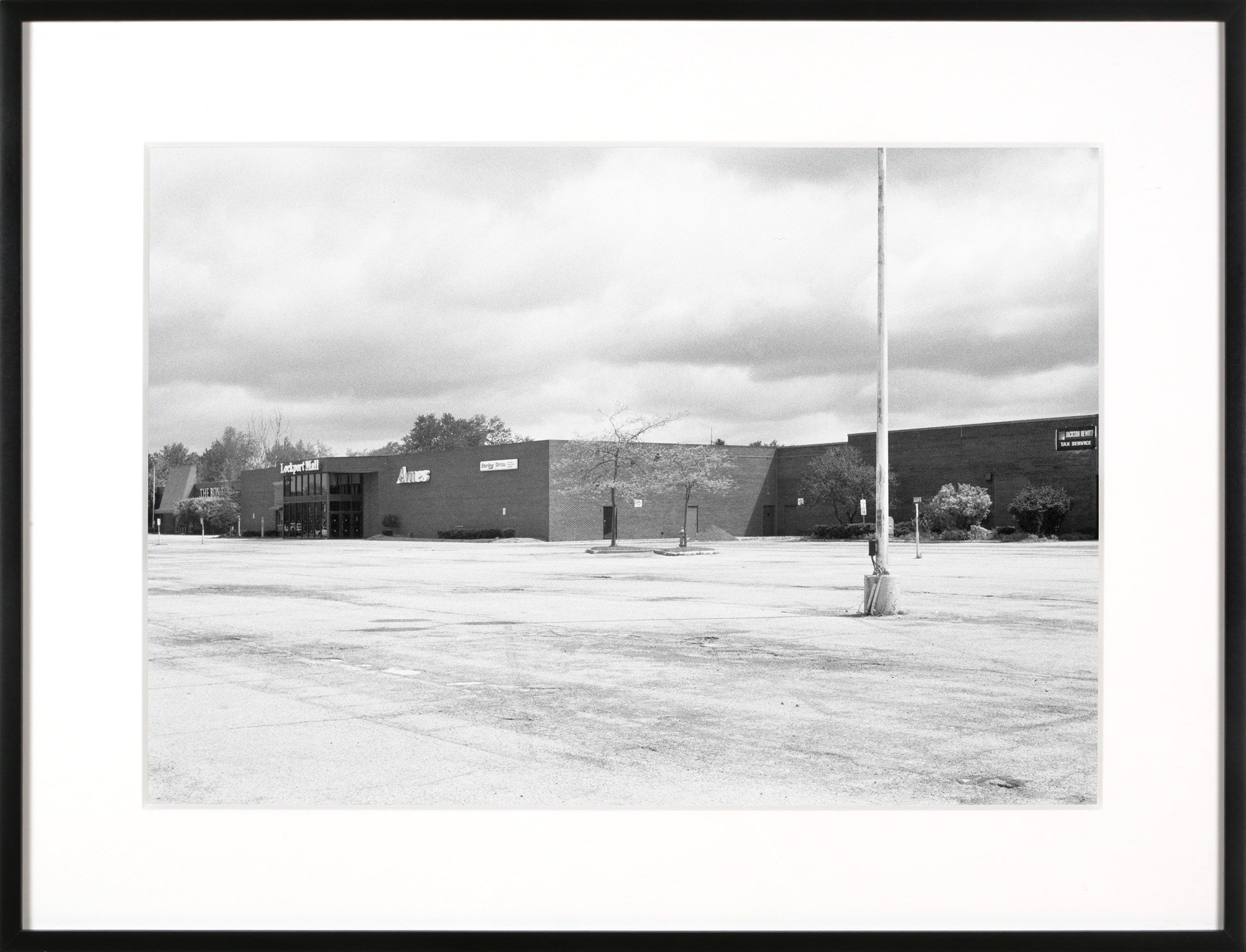

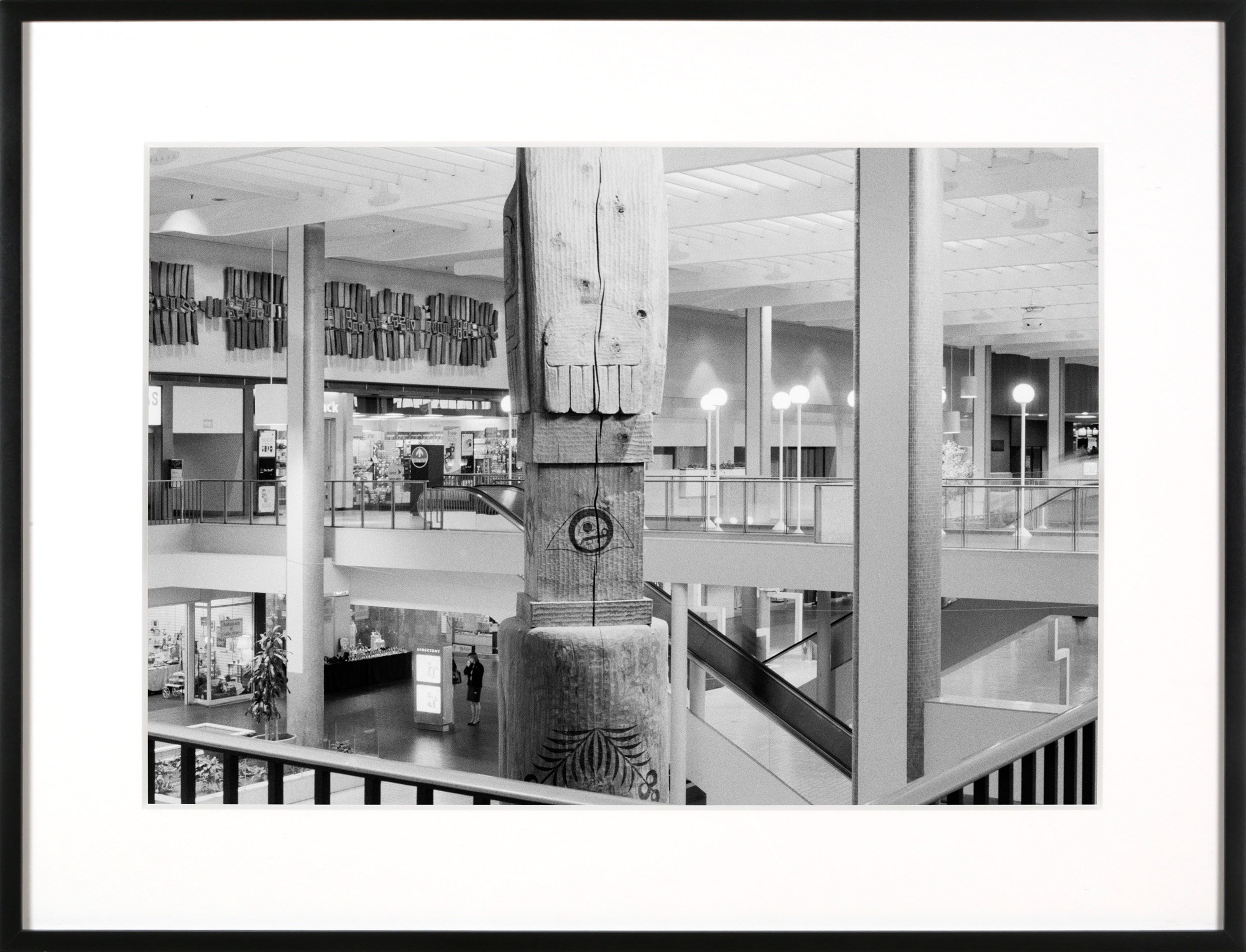
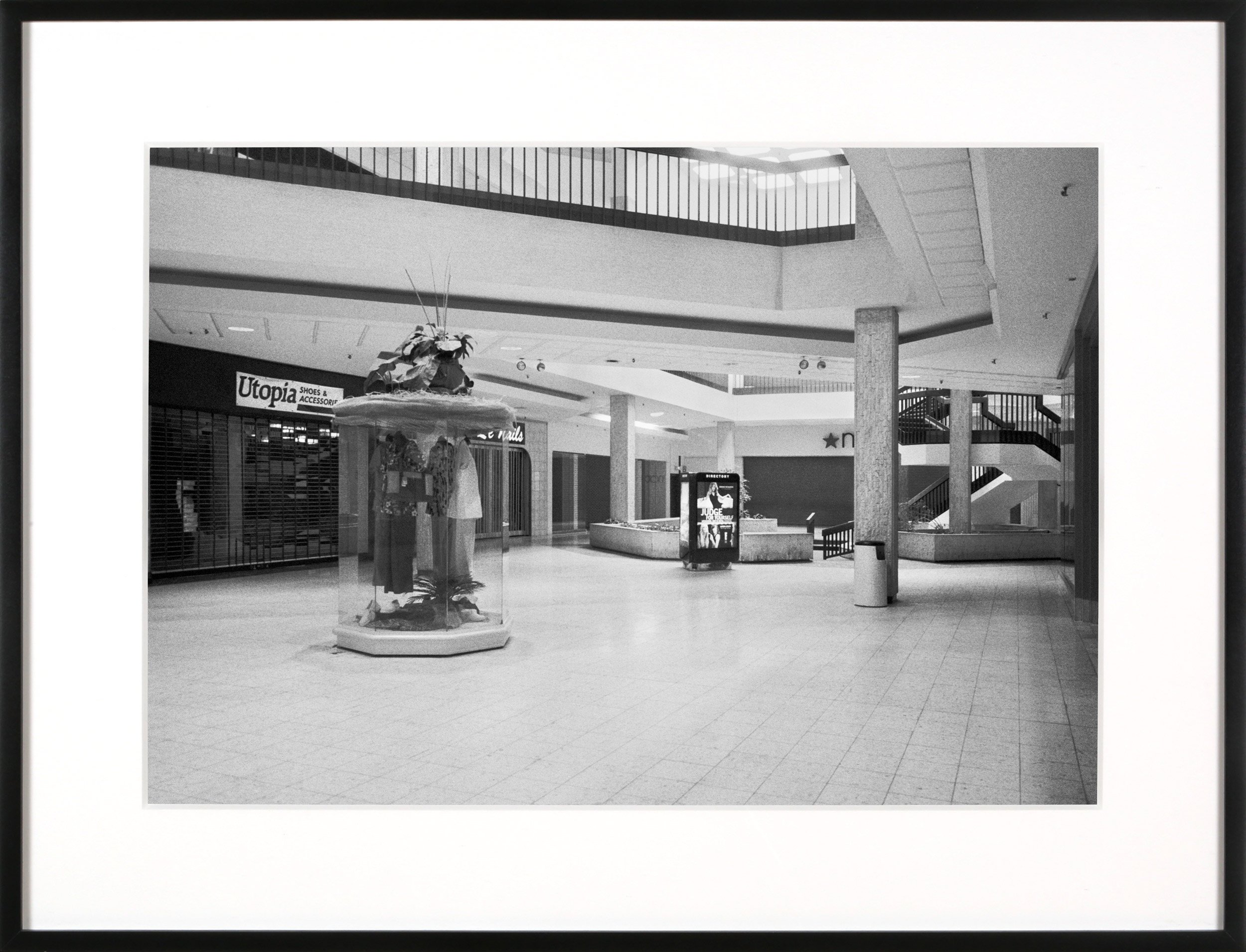

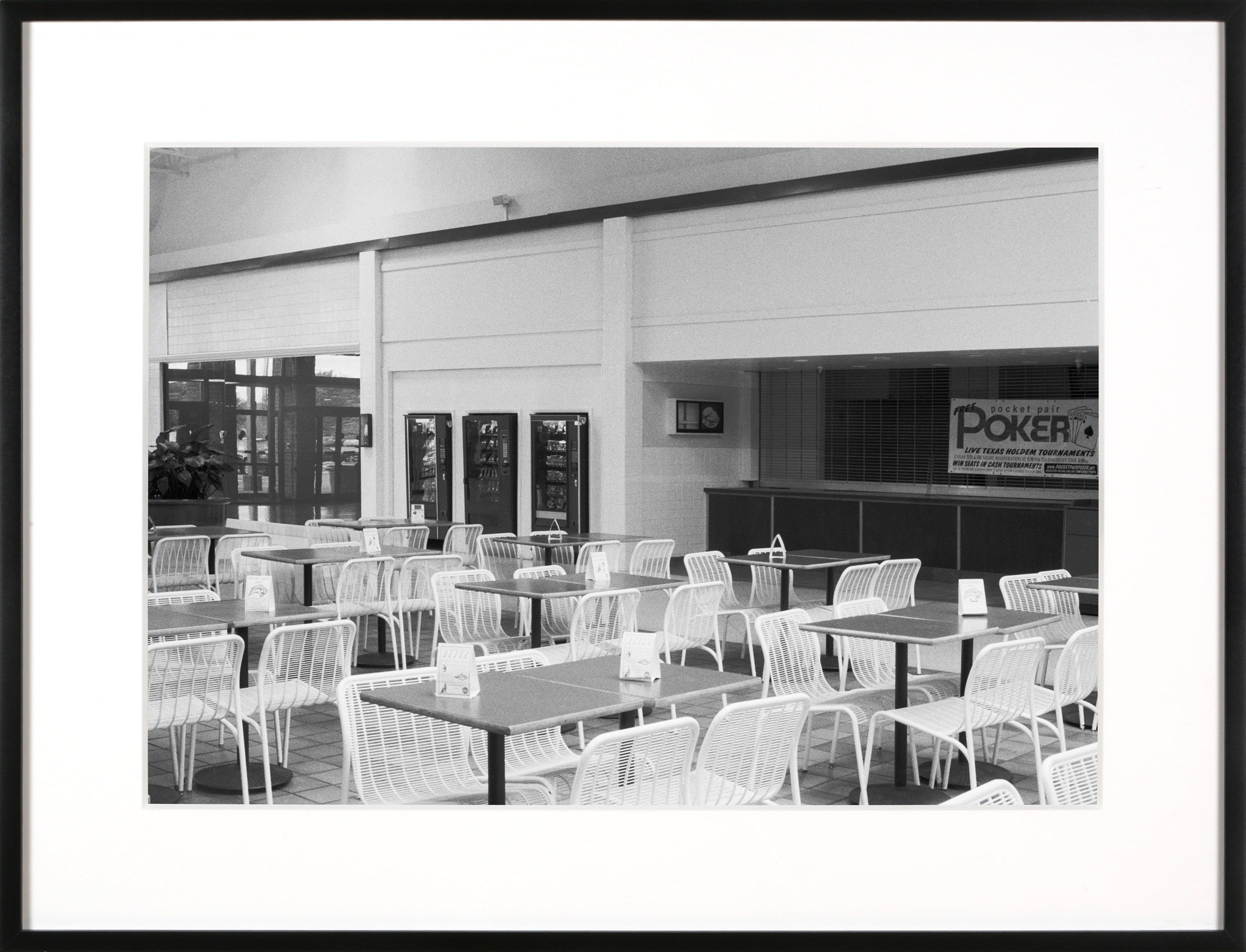
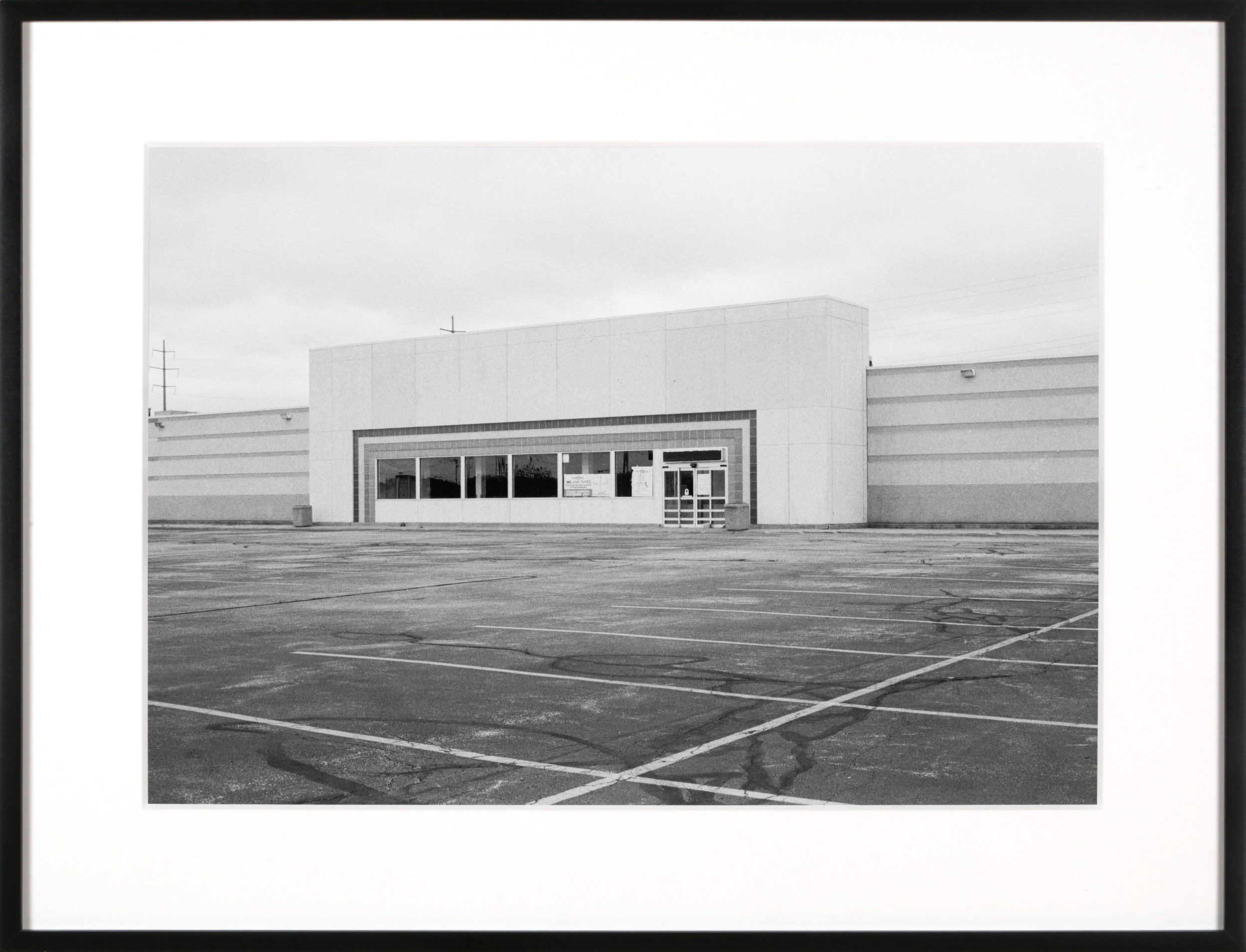

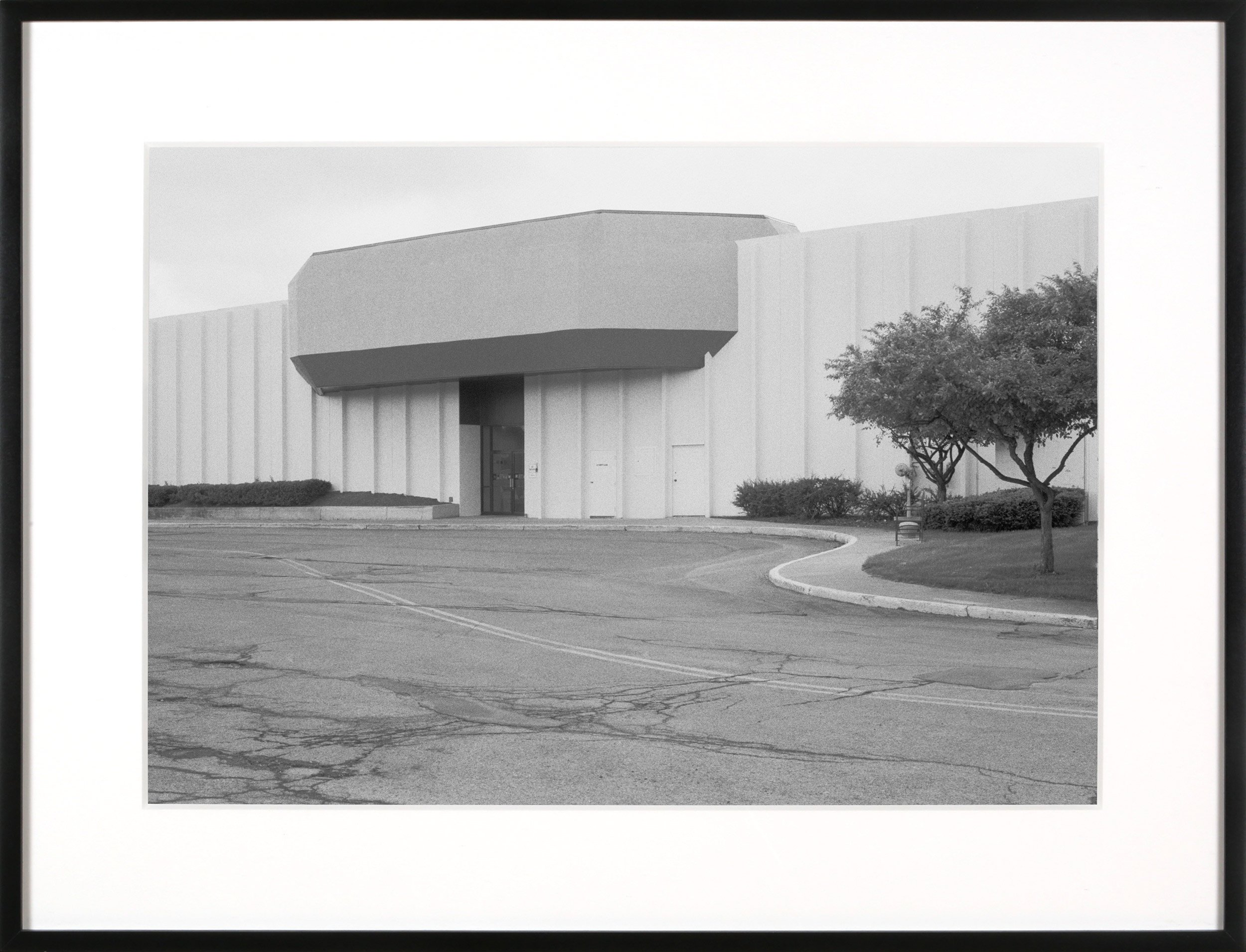
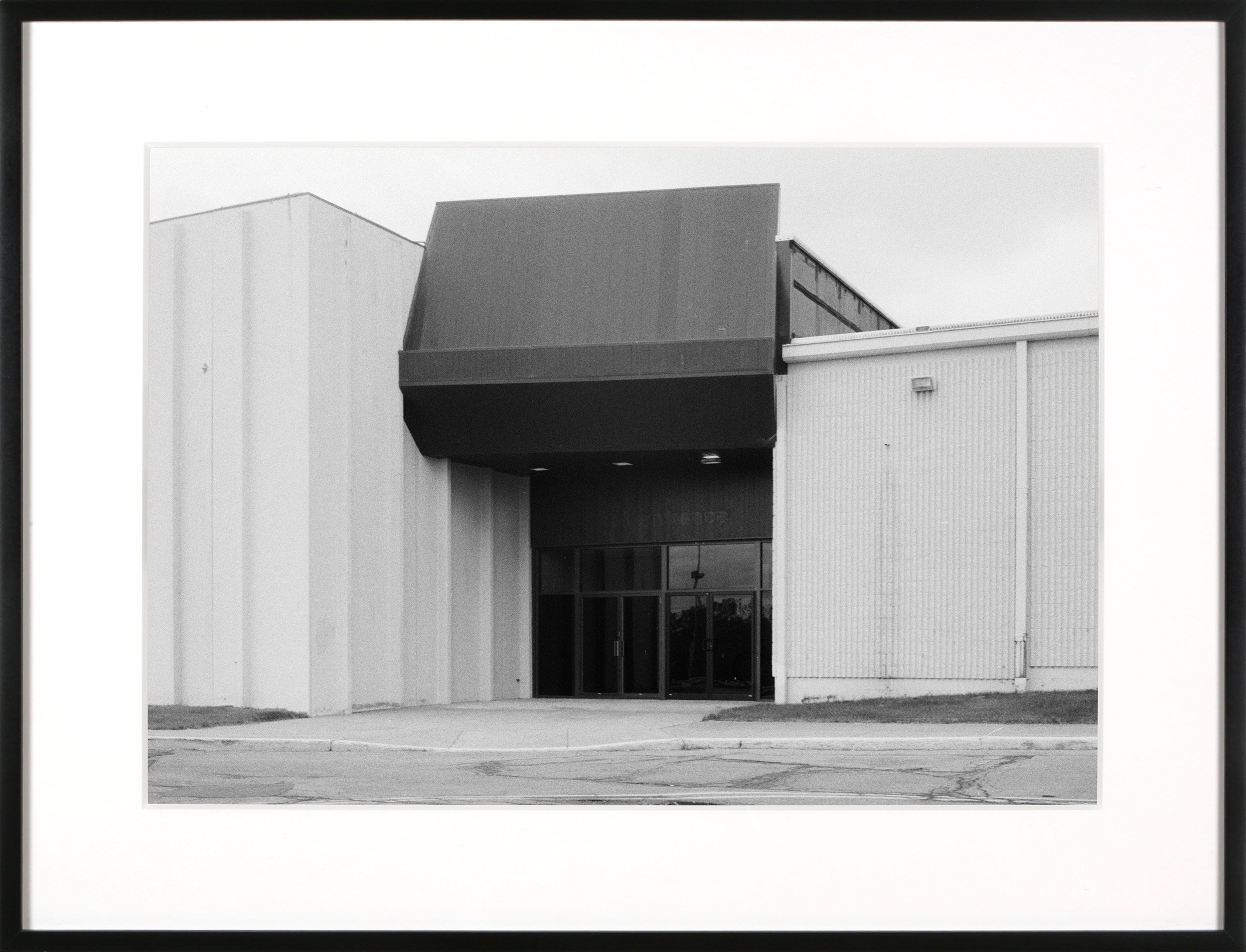
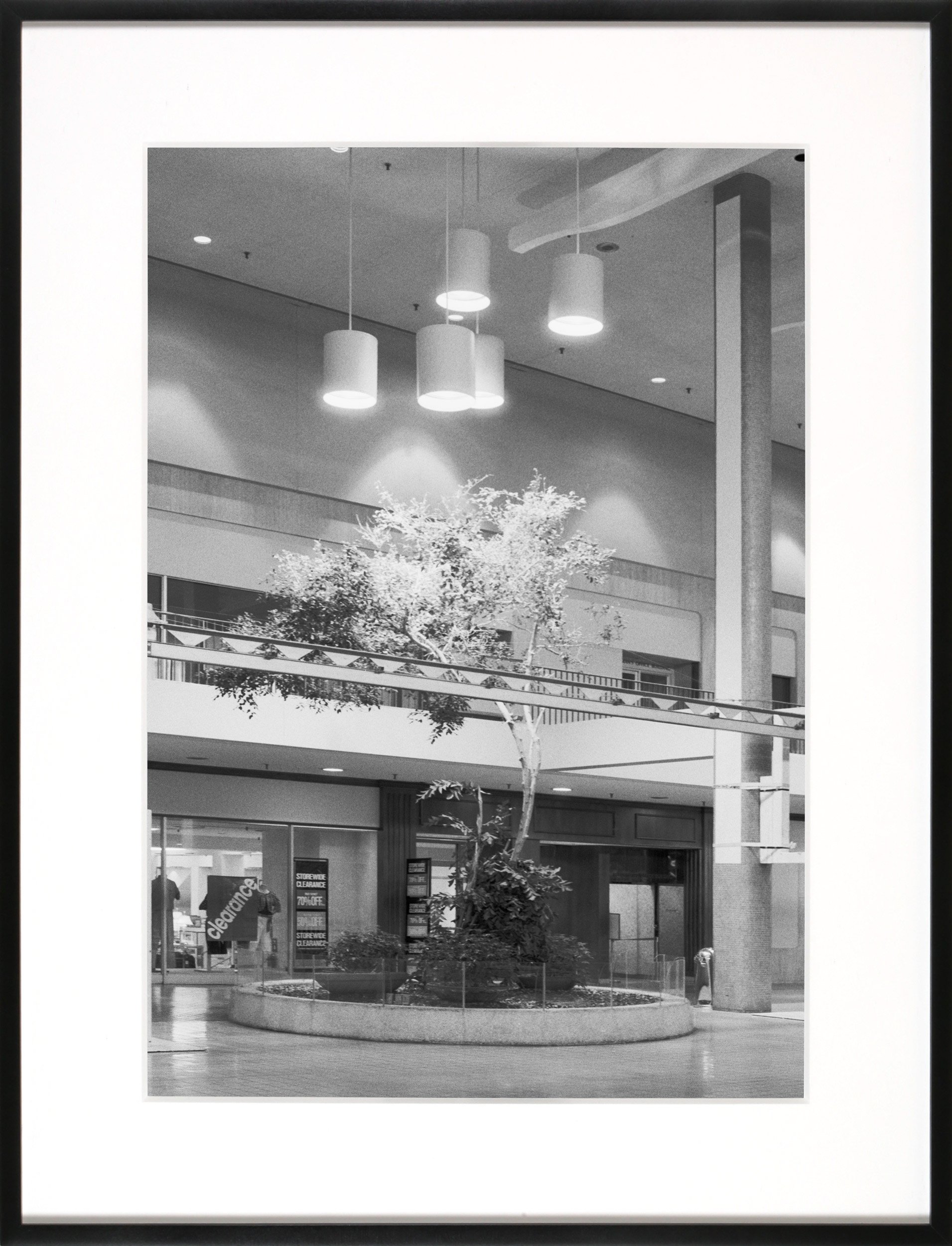
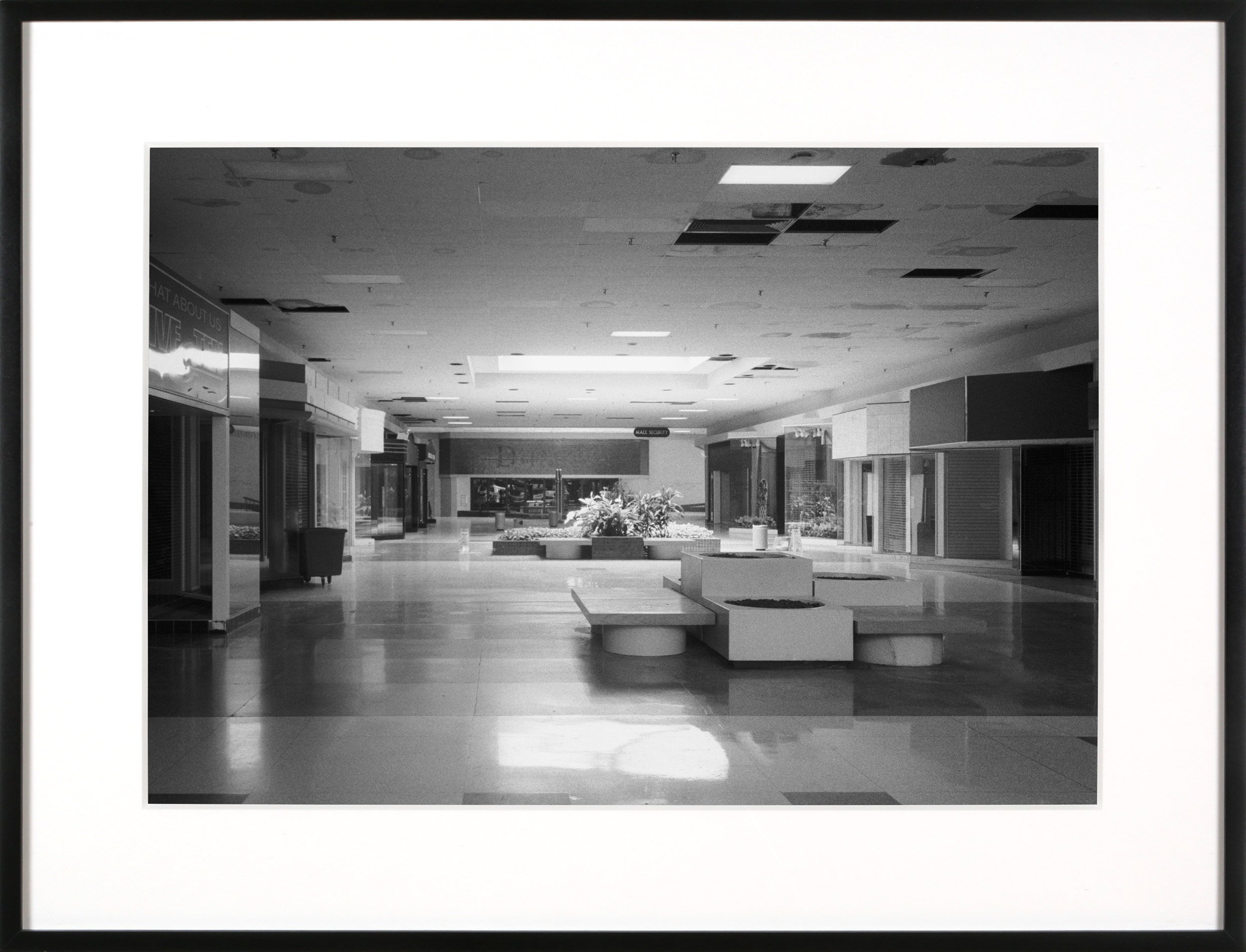
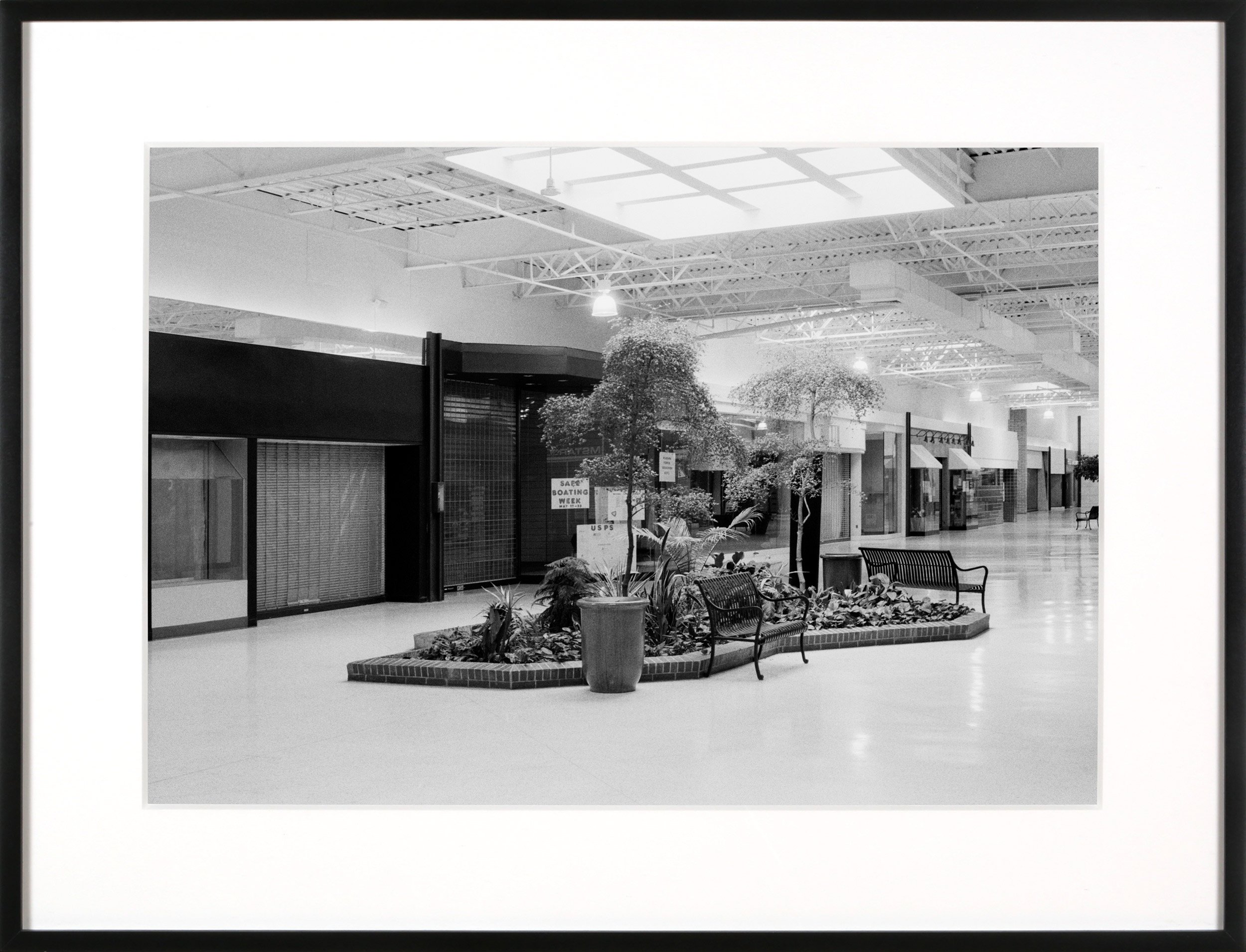
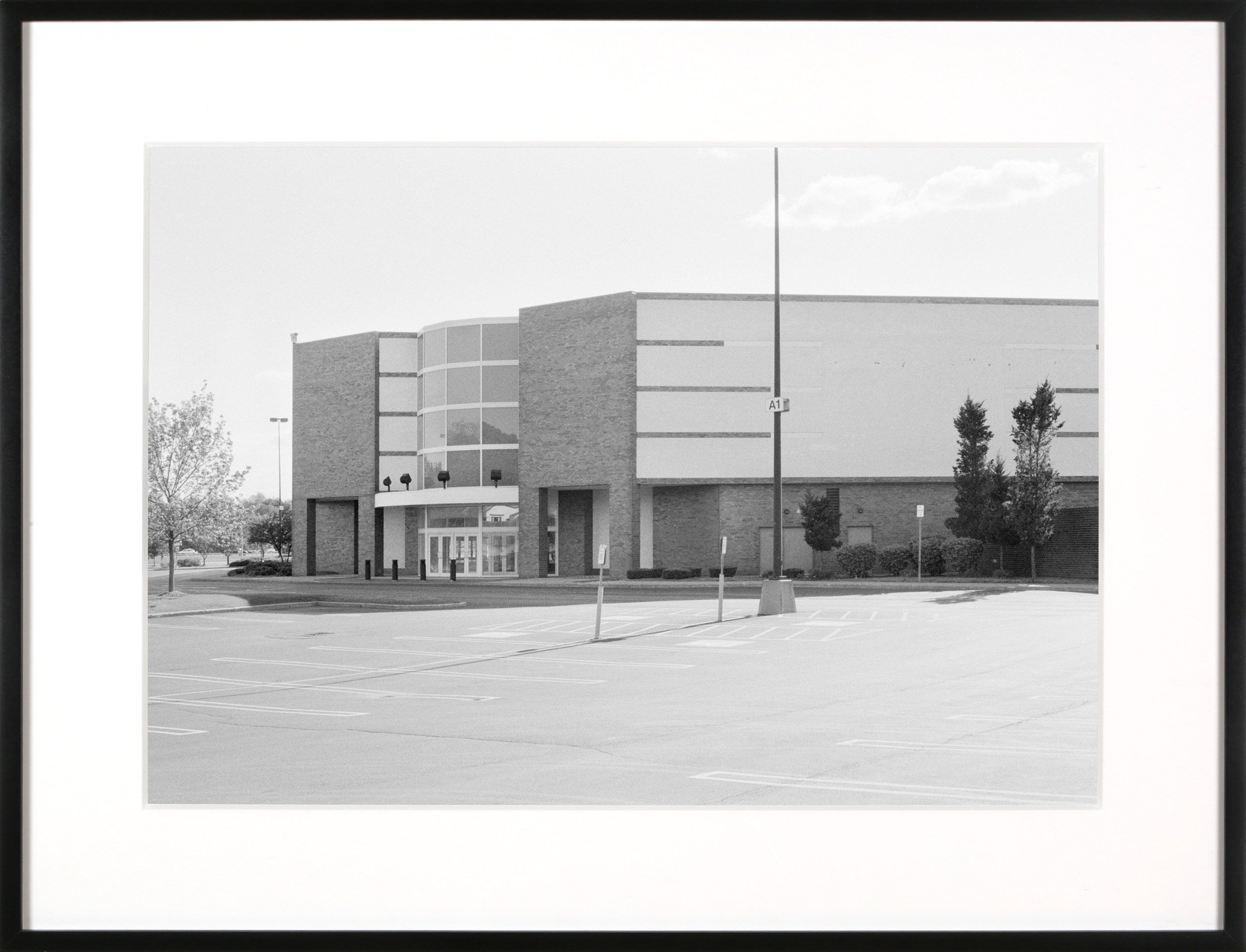
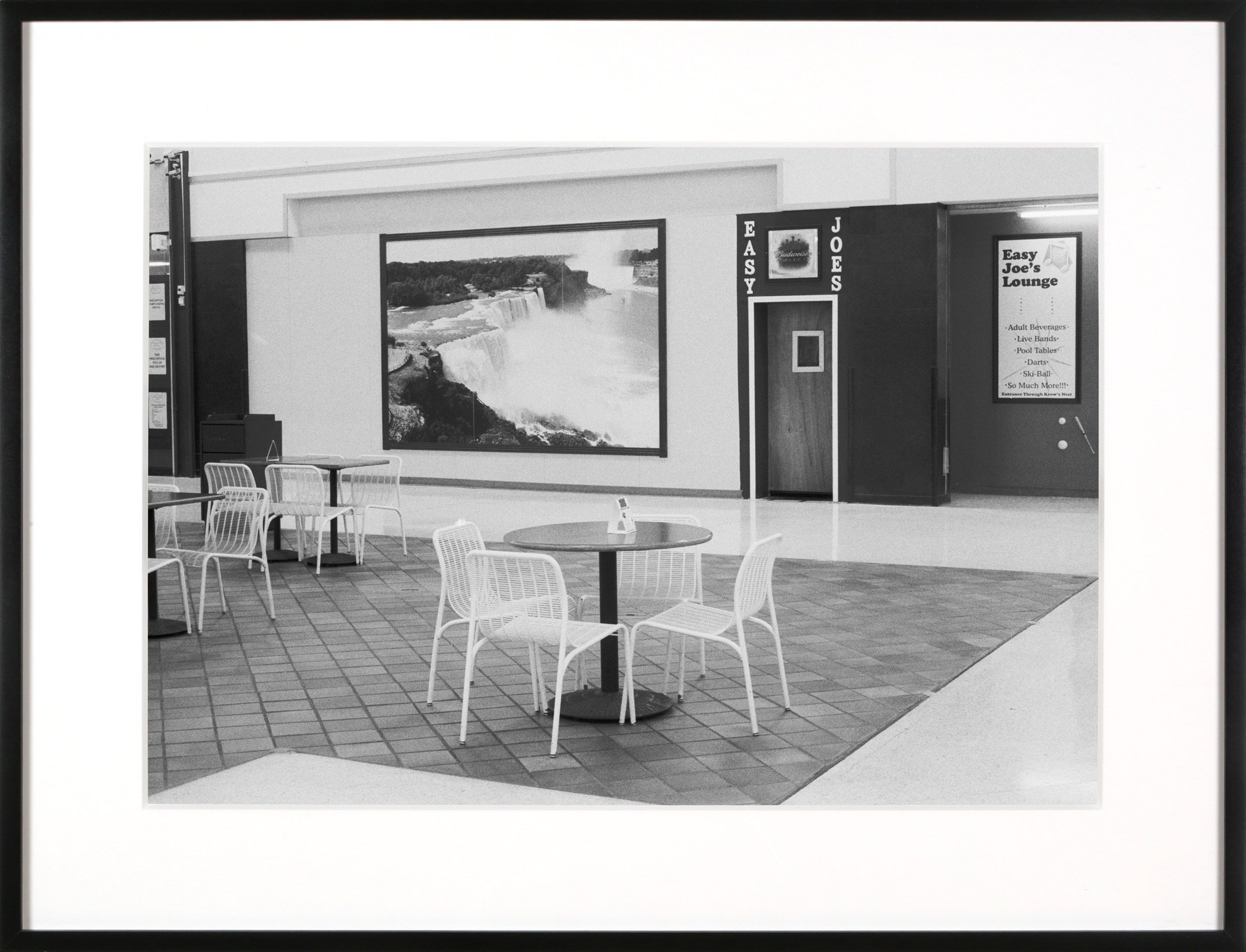

American Passages
2001–2011
Material Conditions and Production:
The series American Passages are black and white photographs taken at 90 different vacant or largely vacant commercial shopping centers. The title opts for an anglicization of the term “passage” a German word borrowed from French designating enclosed pedestrian shopping environments, a building type arising in the late 18th century and a prototype for the modern mall. As Johann Geist explains in his book Arcades: The History of a Building Type (1985), “The German term comes from the French passage, which was used as early as the eighteenth century to refer to the narrow private streets which divided and connected the interiors of larger building blocks. The root is passus, the Latin word for step, conveying the element of movement, of passage through a space. It has numerous meanings in common linguistic usage […] all these meanings, either spatial or temporal in emphasis, have one element in common: they express transition, threshold, passing, measured distance, or disappearance. Something occurs, comes to pass; movement becomes an event.”
The 180 images comprising the series are shown either as framed prints or as a dual 35mm slide projection, and are arranged in chronological order by the date of the structure’s establishment.
Malls and Post-War Expansion:
The American mall would reach its peak saturation in 1996 with 41,235 shopping centers in operation. As of 2008, nearly 8,000 were in the process of closure and another 25% in distress. While the overabundance of shopping malls is often considered a side effect of the post-war suburbanization spurred on by political unrest in American cities (most notably during the Civil Rights movement), and government programs such as the G.I. Bill and the Interstate Highway Act of 1956, the explosion of the shopping center was first ushered in by a 1954 revision of the corporate income tax code, which enabled “accelerated depreciation” (deductions that allowed developers to take large upfront write-offs irrespective of profitability). The result was tax-free income to developers, and a system of state sponsored real estate speculation (properties would often be resold as real estate values increased, and the benefits of accelerated depreciation decreased, allowing developers to hold on to properties for future resale without incurring taxes). Since this rule did not apply to the renovation of existing structures, developers focused on undeveloped land on the peripheries of suburbs rather than already established downtown shopping areas, encouraging the spread of suburban sprawl. This phenomenon produced an excess of enclosed shopping centers and the eventual oversaturation of the American landscape with retail complexes. In the 1990s, when this building spree hit a plateau of diminishing marginal returns, malls began to be replaced by other commercial shopping centers (such as “big-box” retailers, whose building costs were much lower), and have increasingly become outmoded and unprofitable in the decades since, further spurred on by the massive growth of e-commerce. This shift in consumer habits, and the high costs of maintaining and securing such properties, contributed heavily to their decline. Demolition and difficulty in repurposing the structures were also cost prohibitive (aside from the tax incentives that made claiming losses from under-performing retail spaces a viable tax shelter for diversified holding companies) many continued to be open to the public well after they had fallen to low levels of occupancy, while falling into disrepair.
Titling Conventions:
For a presentation of the framed prints, the 180 works are individually titled and dated 2011, the date of their first exhibition. The works are titled with the name of the shopping mall and a brief description of the view or shop name pictured (e.g., View of Interior or 'Mastercuts'), followed by the city and state, the date the mall was established, and the date the mall was demolished when applicable. The date attributed to the work is the year of its first exhibition. A final description of the work, for example one that would appear on a wall didactic in an exhibition space, might read:
Randall Park Mall (View of Interior), North Randall, OH, Est. 1976, Demo. 2014
2011
Epson Ultrachrome K3 archival ink jet print on Hahnemühle Photo
Rag paper
21 5/8 x 28 1/8 inches
Here annotated:
Randall Park Mall (View of Interior) [name of mall and description of view], North Randall, OH [city and state], Est. 1976 [establishment date of mall], Demo. 2014 [demolition date of mall]
2011 [date of first exhibition]
Epson Ultrachrome K3 archival ink jet print on Hahnemühle Photo Rag paper [media]
21 5/8 x 28 1/8 inches [framed dimensions]
For a presentation of the slide projection, the following title is used with the date of its first exhibition, 2009:
American Passages (2001–2009)
2009
Set of 180 images on analog slides shown via slide projection
35mm slides, dual projection with dissolve unit
Projection dimensions variable


